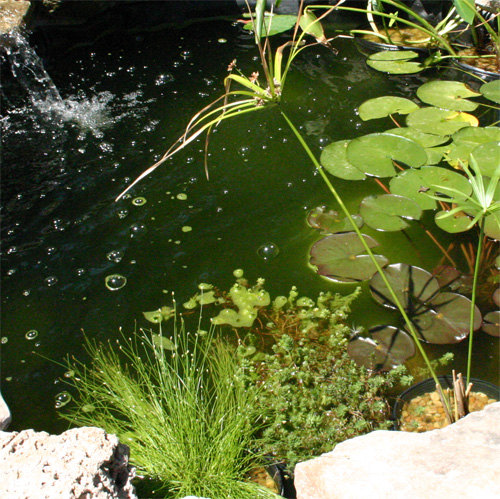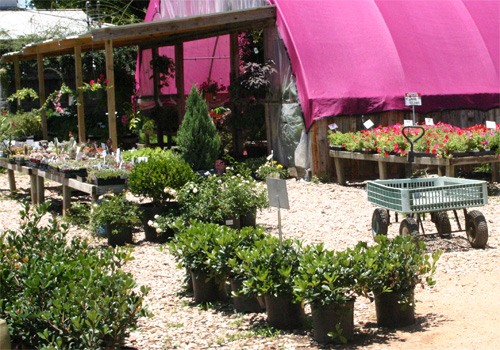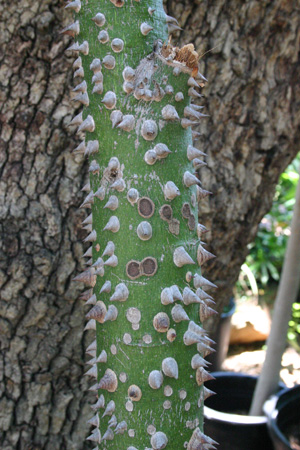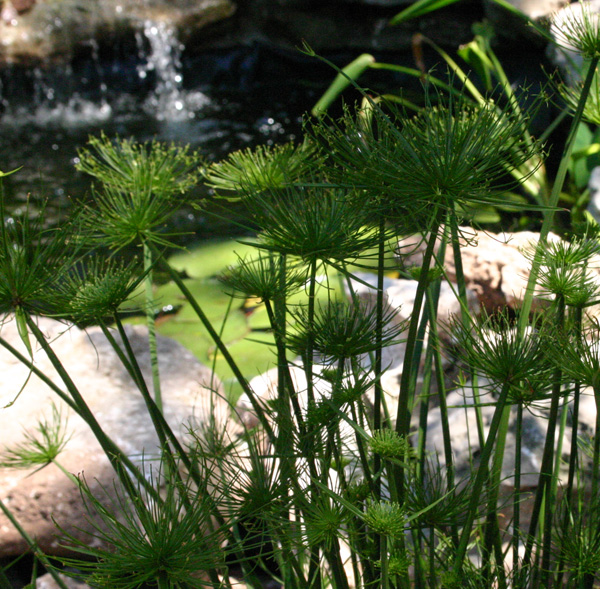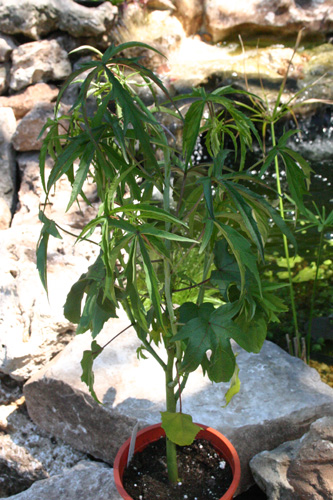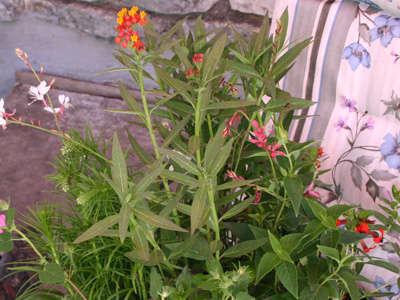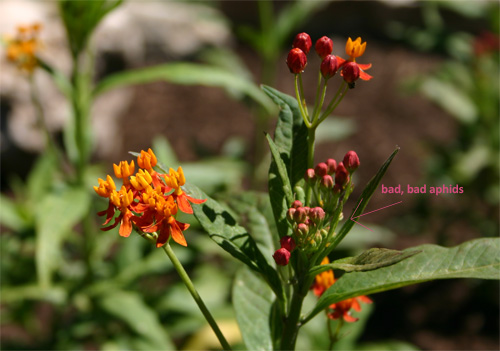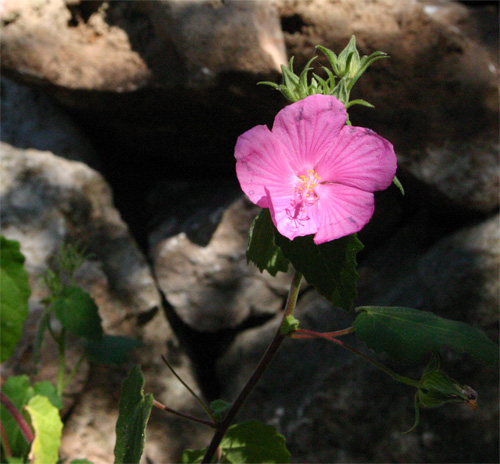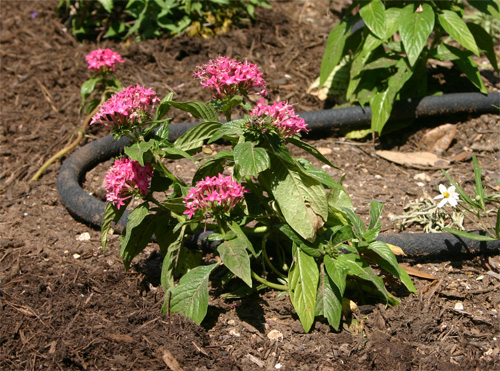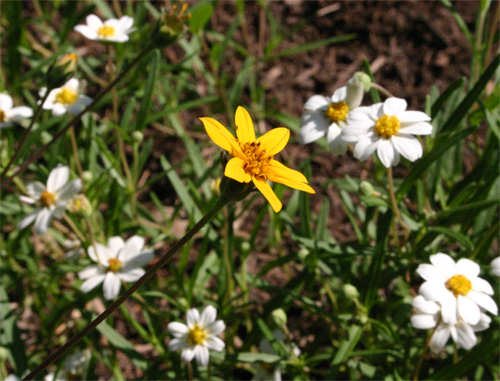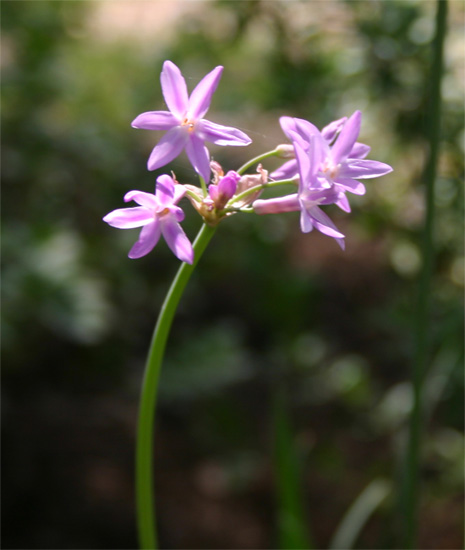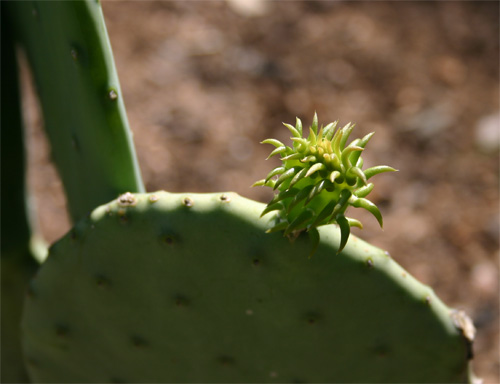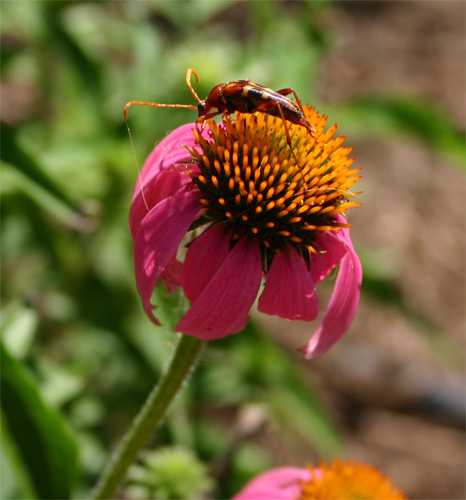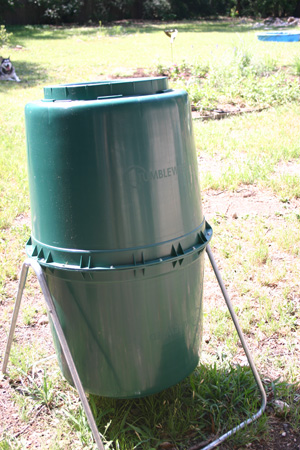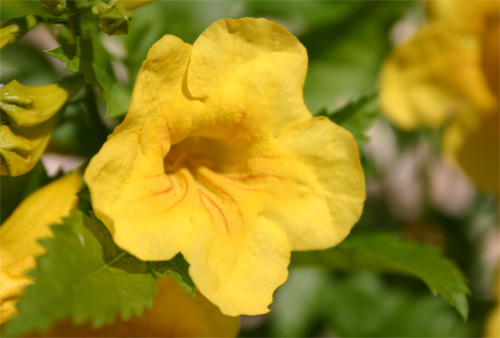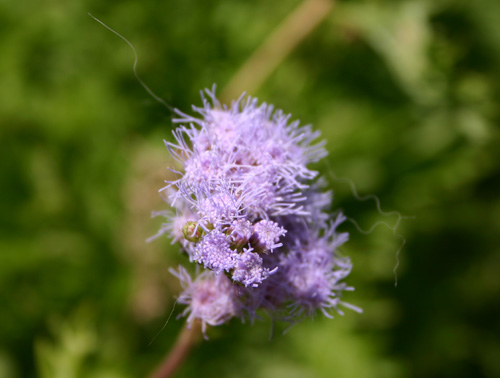Due to some exciting goings on, my next few posts will be bird-related, so I thought I best put out a veggie garden update. But first I want to share some thrilling butterfly news — the Monarchs, Queens, Swallowtails, and Gulf Fritillaries, among others, have finally returned to the garden! You can believe I’ll be out there with my camera. I did manage to capture a picture of my first Gray Hairstreak butterfly. I was happy to see her on the Blackfoot Daisies — those flowers are often ignored by the bigger butterflies, who go straight for the Lantana or Mistflower. I read that Gray Hairstreak caterpillars will eat bean plants. Oh well, guess I’ll share.
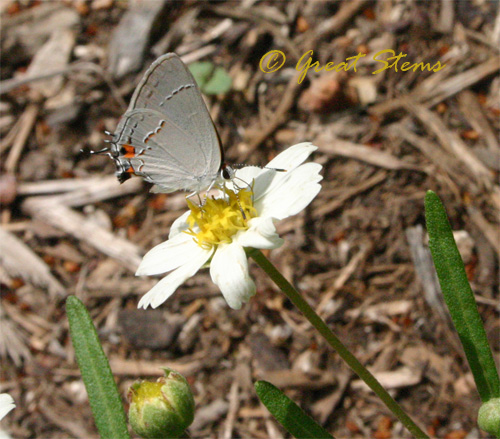 But back to the “farm.”
But back to the “farm.”
The cantaloupe experiment has finally come to an end, and it’s report time. It’s kind of sad, really. My beautiful cantaloupe plants finally succumbed to the aphids, which had become so abundant (despite the ladybugs) that their sticky “honeydew” residue, combined with the rains from last week, had led to a nasty sooty mold problem.
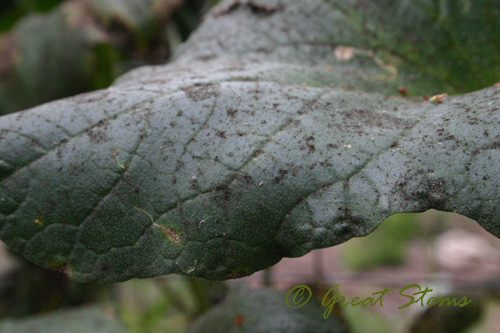
After several days of wondering whether to let my cantaloupes keep trying to ripen, I decided to go ahead and pull the plug. My big one just kept growing but never sweetening, and the shapes of the other two medium-ones led me to believe that I was, in fact, growing a hybrid. I suspected as much, but I decided to enjoy the process anyway.
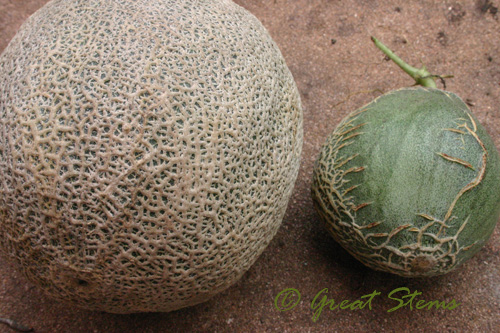 The big cantaloupe, cut open, actually did look like a cantaloupe. I opted not to take a bite, but I did lick a piece. Yuck… as I suspected. Though I couldn’t help but feel a little disappointed, I do consider the experiment a success. Growing the cantaloupes got me excited about my first veggie garden, led to my first raised beds with trellises, and really helped me get a headstart on the veggie learning curve. I did learn a lot, and I got hooked on growing edibles. Plus, one can’t beat the excitement of finding out that your plant is actually growing fruit (even if it’s weird hybrid fruit). I don’t consider the cantaloupes my first official harvest, mind you. They were an experiment, especially after I found out that seeds from store-bought cantaloupes should not be used, no matter how much fun it might be.
The big cantaloupe, cut open, actually did look like a cantaloupe. I opted not to take a bite, but I did lick a piece. Yuck… as I suspected. Though I couldn’t help but feel a little disappointed, I do consider the experiment a success. Growing the cantaloupes got me excited about my first veggie garden, led to my first raised beds with trellises, and really helped me get a headstart on the veggie learning curve. I did learn a lot, and I got hooked on growing edibles. Plus, one can’t beat the excitement of finding out that your plant is actually growing fruit (even if it’s weird hybrid fruit). I don’t consider the cantaloupes my first official harvest, mind you. They were an experiment, especially after I found out that seeds from store-bought cantaloupes should not be used, no matter how much fun it might be.
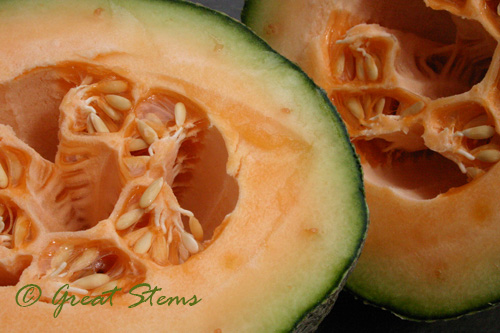 So I began the process of cutting up the fruit for the compost bin. By the way, ever wonder what the inside of a young cantaloupe looks like? Pretty cool.
So I began the process of cutting up the fruit for the compost bin. By the way, ever wonder what the inside of a young cantaloupe looks like? Pretty cool.
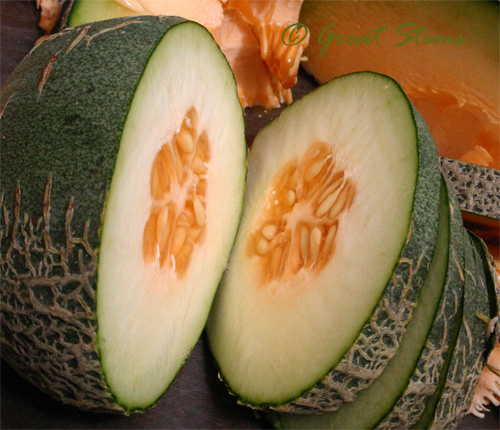 Removing the icky plants from the trellis was NO fun. During the process I realized why many garden bloggers opt only to show their beautiful harvests instead of what might be a failure — it’s depressing. I was out there quite grateful that my camera was nowhere near the sooty mold, and while I felt partially obligated to show the whole miserable trellis, I just wanted to get that cantaloupe and all the thousands of aphids into the trash and as far away from my sugar pumpkin plants ASAP. I didn’t even want the plants to go into the compost, they were so gross.
Removing the icky plants from the trellis was NO fun. During the process I realized why many garden bloggers opt only to show their beautiful harvests instead of what might be a failure — it’s depressing. I was out there quite grateful that my camera was nowhere near the sooty mold, and while I felt partially obligated to show the whole miserable trellis, I just wanted to get that cantaloupe and all the thousands of aphids into the trash and as far away from my sugar pumpkin plants ASAP. I didn’t even want the plants to go into the compost, they were so gross.
A closer inspection of the sugar pumpkin plants showed that the aphids are starting to move over, and I plan to attack them better. I was happy to find several ladybug nymphs — hurray for my aphid-fighting allies!
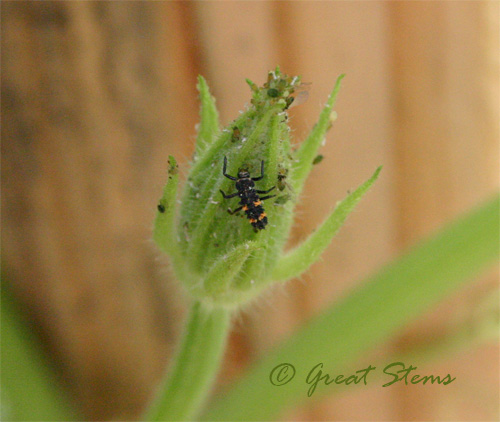 But all is well, and I’m looking forward. The sugar pumpkins are the biggest things I’ve ever seen. They are growing up and over and out from the raised garden bed.
But all is well, and I’m looking forward. The sugar pumpkins are the biggest things I’ve ever seen. They are growing up and over and out from the raised garden bed.
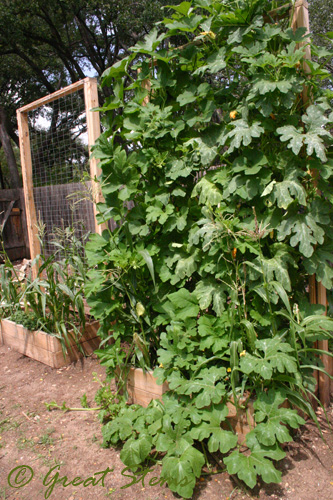
I FINALLY had a blooming female bud on a sugar pumpkin, and hopefully I helped it pollinate in time. Cross your fingers! There will be more, and I must be on the lookout. There were two blooming females on the jack-o-lantern pumpkins, but I doubt they’ll be big enough for carving by Halloween. At least they opened, and I did the pumpkin porn thing to help things along — I didn’t have time to watch to see whether the bees were doing their job!
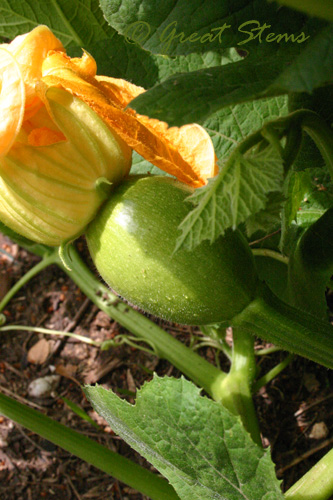 The jack-o-lantern pumpkins have begun their spread into the perennial garden, so I have to monitor them. One is even taking advantage of the dead Mexican redbud. It’s nice to see green on the redbud again, poor thing. 😉 It’s scheduled for fall replacement.
The jack-o-lantern pumpkins have begun their spread into the perennial garden, so I have to monitor them. One is even taking advantage of the dead Mexican redbud. It’s nice to see green on the redbud again, poor thing. 😉 It’s scheduled for fall replacement.
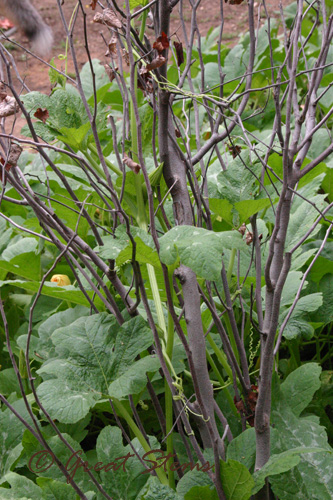 The corn is growing, though I’ve found a couple of worms hiding out in the leaf niches. I’m trying to watch for more, but they seem to sneak in when the gardener’s not looking. I’ve also got young beans, zucchini, and snap peas growing, as well as tiny kohlrabi, carrots, lettuce and spinach seedlings.
The corn is growing, though I’ve found a couple of worms hiding out in the leaf niches. I’m trying to watch for more, but they seem to sneak in when the gardener’s not looking. I’ve also got young beans, zucchini, and snap peas growing, as well as tiny kohlrabi, carrots, lettuce and spinach seedlings.
This morning I found some strawberry plants at Natural Gardener. These are “Seascape” strawberries, and when more varieties arrive, I’ll try to get some for comparison. I’m eager for strawberry success!
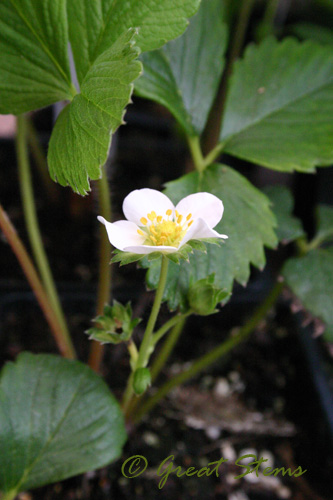 And another exciting find at Natural Gardener — I finally got a gargoyle. They arrived this morning, and the staff seemed as excited as I was. Apparently they don’t usually have gargoyles. He’s a little guy, but his protective watch over our garden is sure to drive away all pests. Right?
And another exciting find at Natural Gardener — I finally got a gargoyle. They arrived this morning, and the staff seemed as excited as I was. Apparently they don’t usually have gargoyles. He’s a little guy, but his protective watch over our garden is sure to drive away all pests. Right?
 Maybe he can tell me what to do about this Green June Beetle. I found it on one of my pumpkin plants. I see beetle grubs in the soil all the time. I believe they qualify as a minor pest, but I’m not sure. The beetle is pretty, as far as beetles go. Underneath is a pretty, shiny coppery surface. It’s still alive, but in a jar, until I decide whether it should stay or go. I don’t care about damage to turf, as I have none worth saving, but I don’t want damage to other plants and fruit.
Maybe he can tell me what to do about this Green June Beetle. I found it on one of my pumpkin plants. I see beetle grubs in the soil all the time. I believe they qualify as a minor pest, but I’m not sure. The beetle is pretty, as far as beetles go. Underneath is a pretty, shiny coppery surface. It’s still alive, but in a jar, until I decide whether it should stay or go. I don’t care about damage to turf, as I have none worth saving, but I don’t want damage to other plants and fruit.
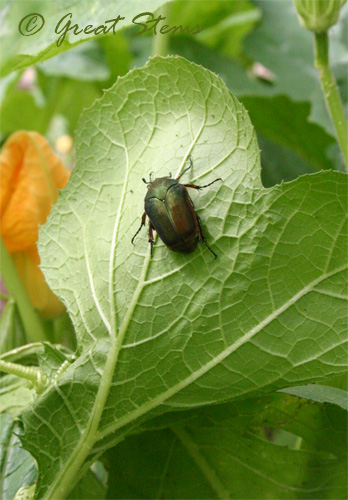
I did learn an interesting way to identify the Green June Beetle white grubs from other white grubs — the ones of the Green June Beetle will “crawl” on their back via undulating movements. Somehow I think Shrek would appreciate that.
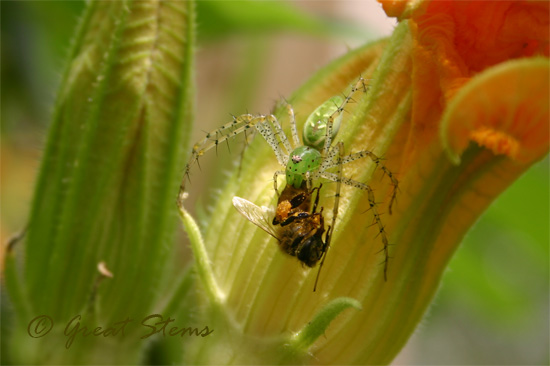
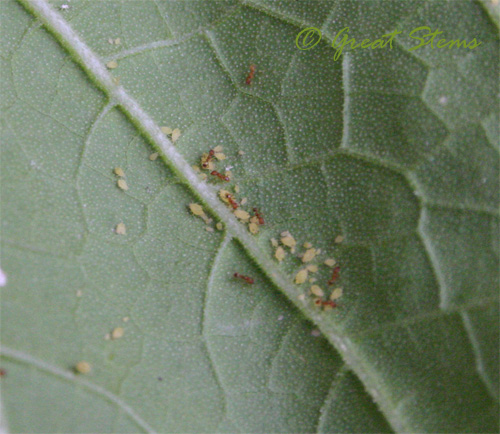
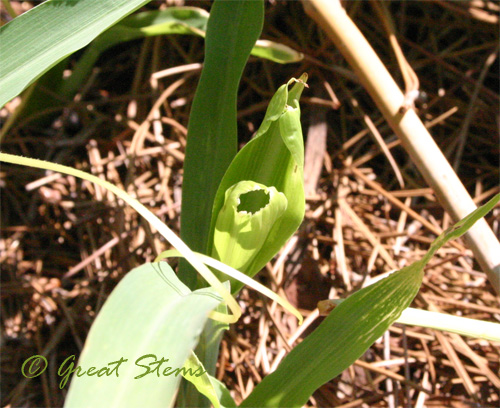
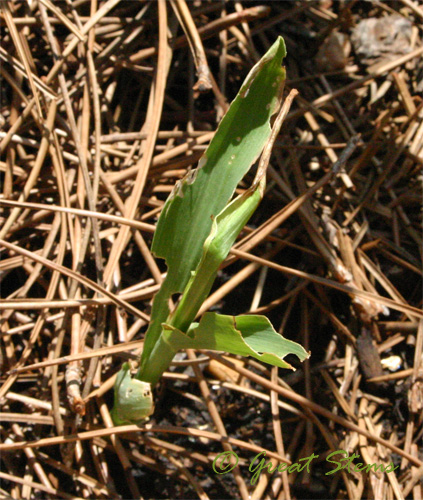
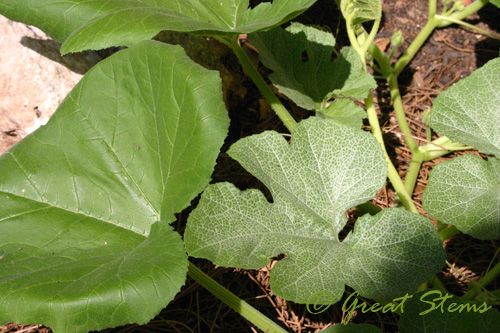
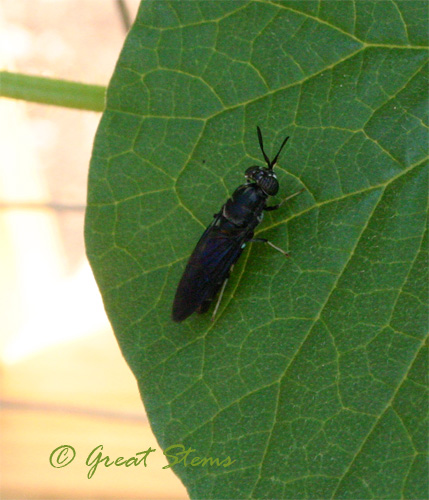
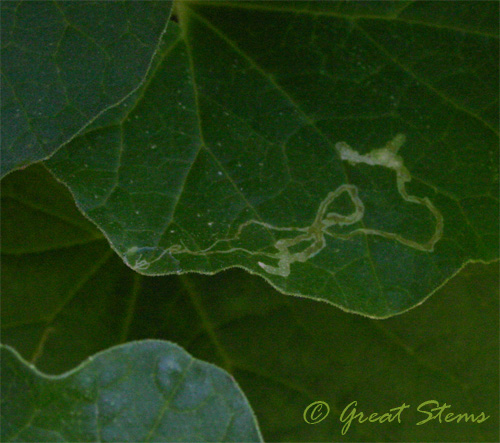
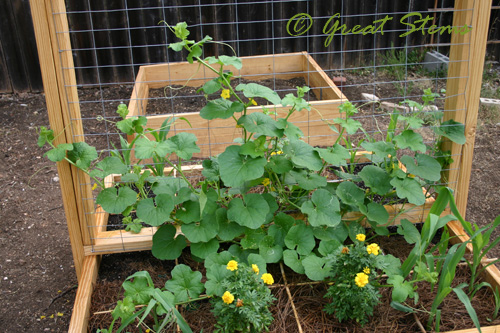
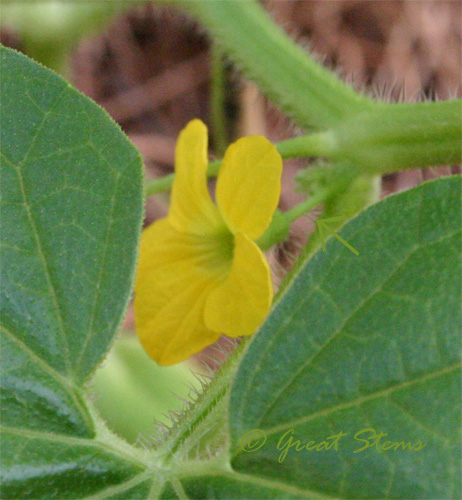
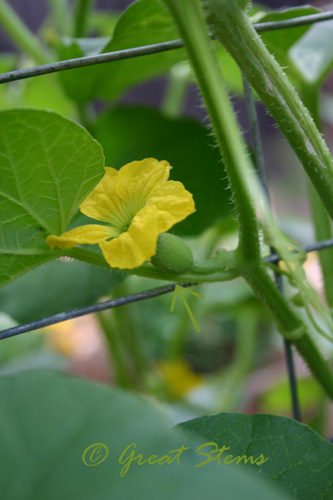
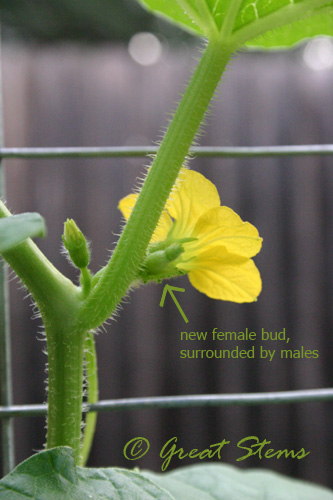
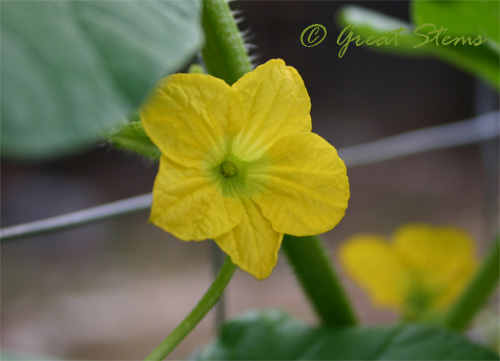
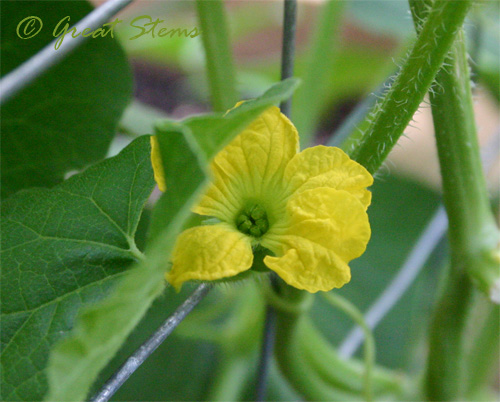
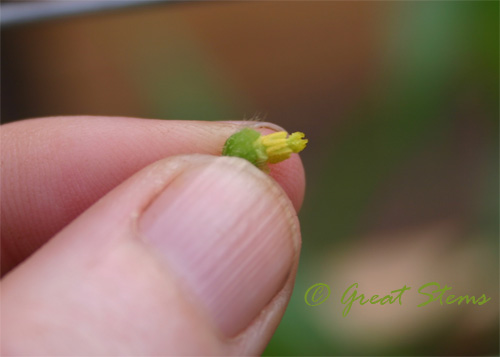
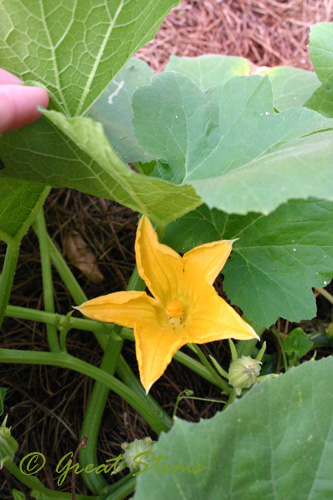
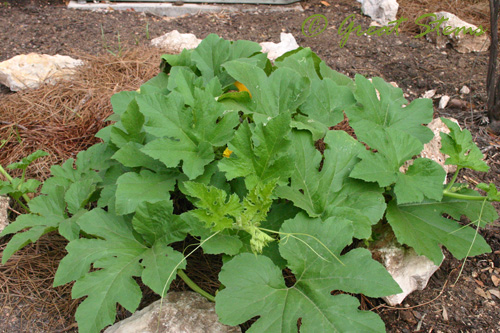
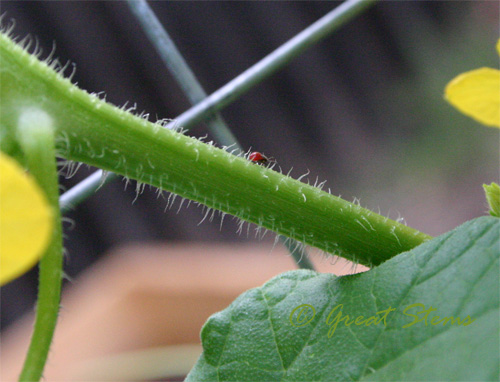
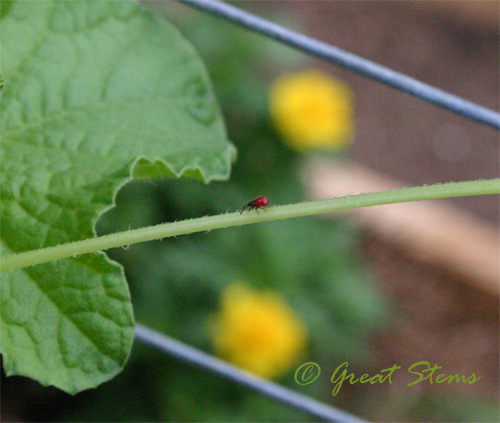
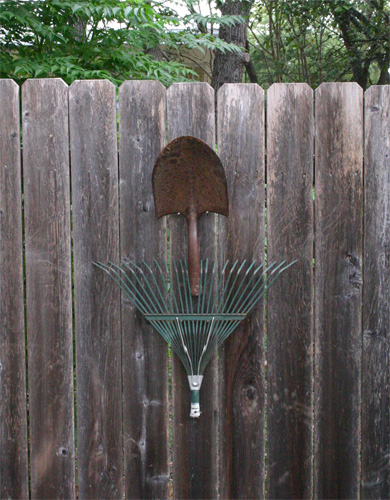
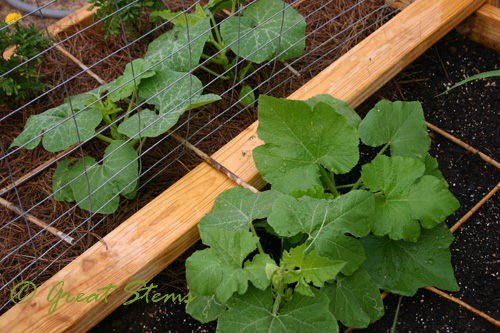
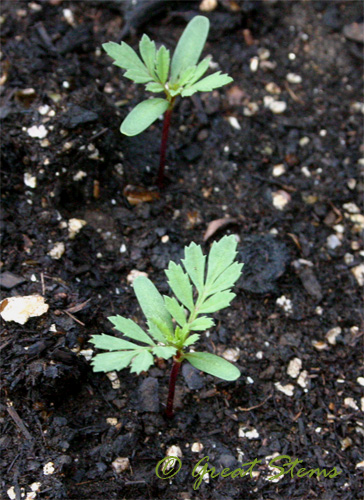
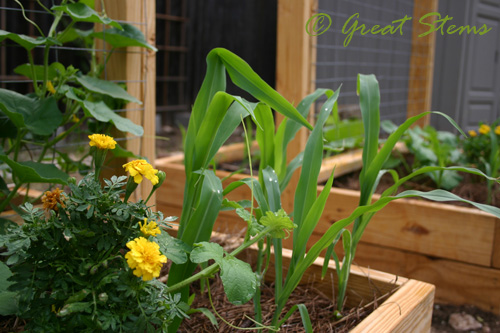
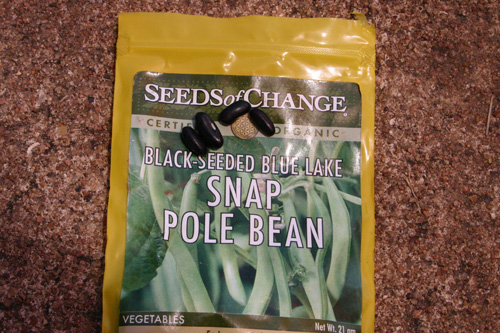
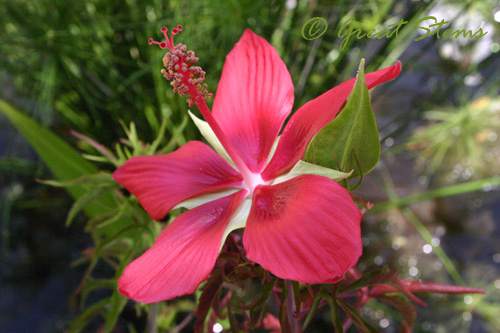
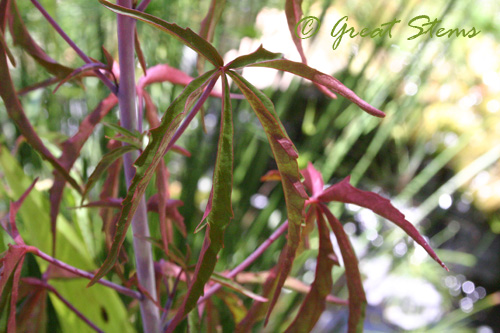
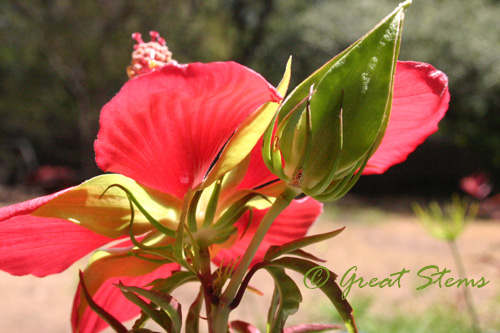
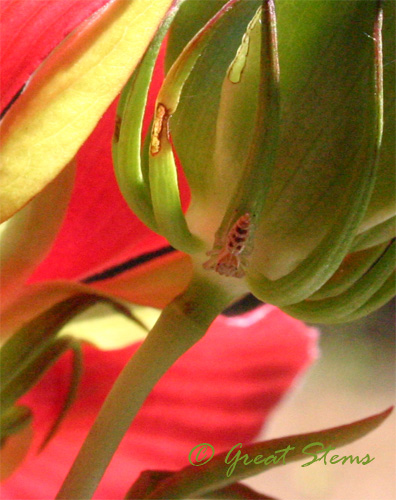
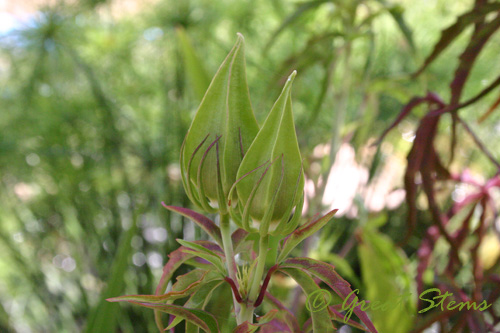
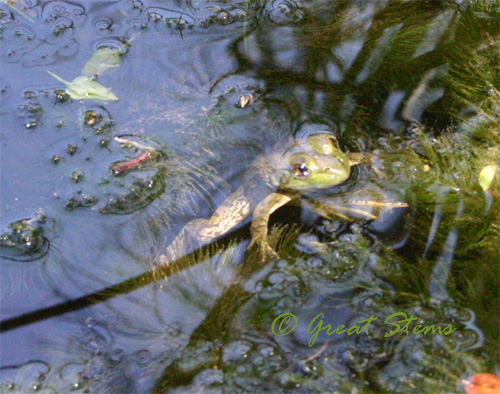
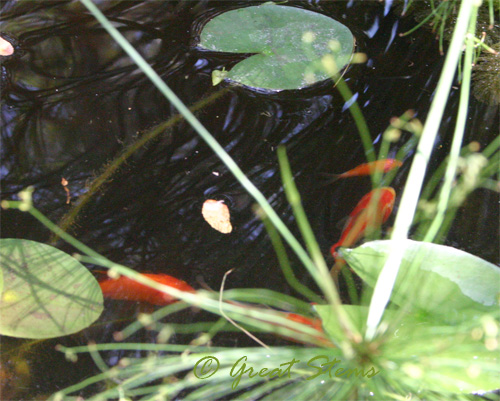
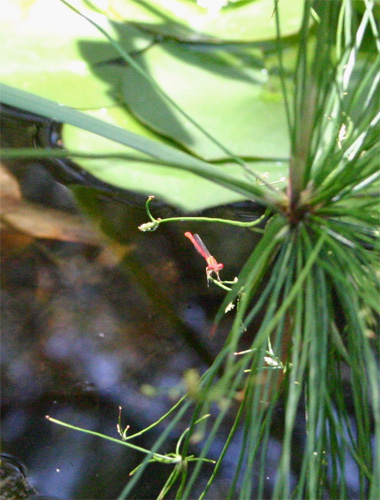
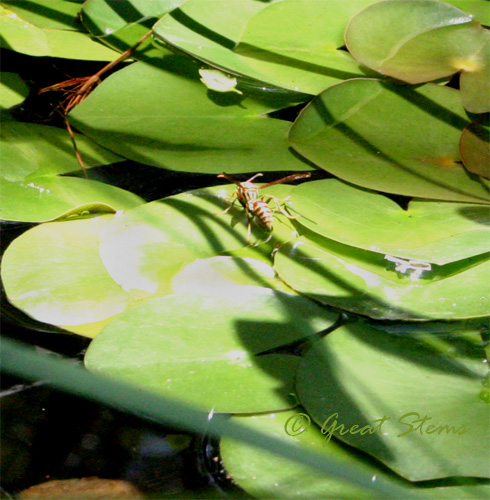
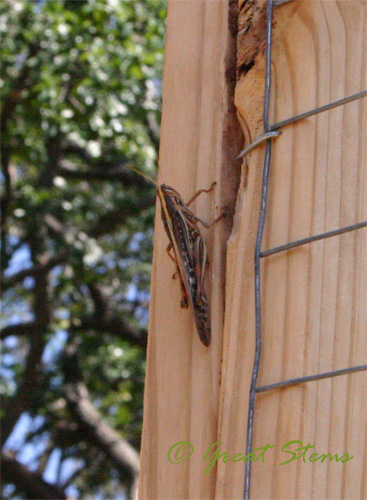
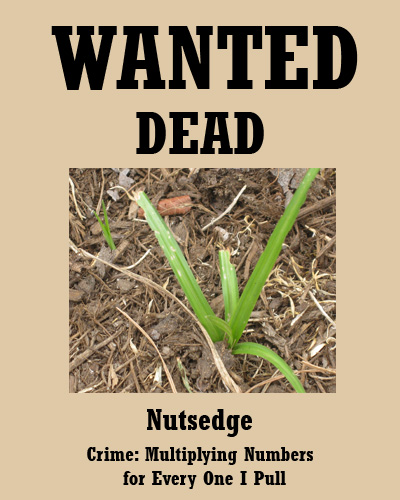
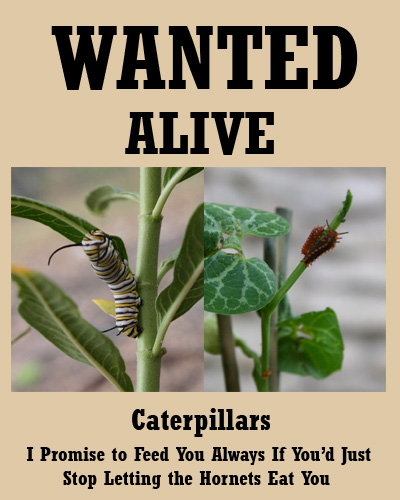
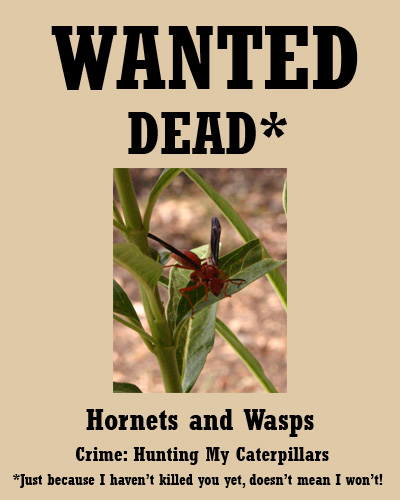
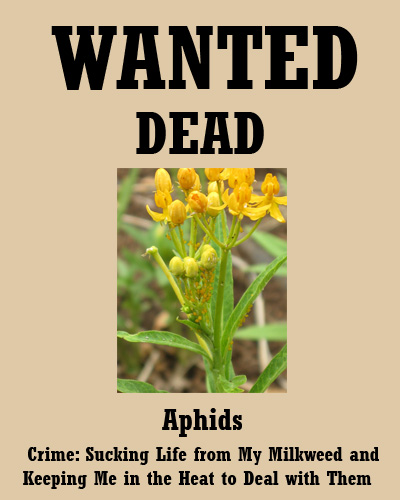
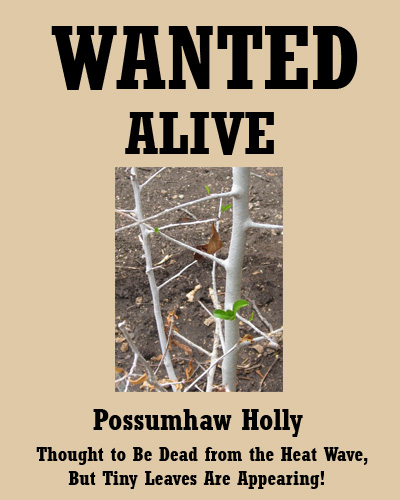
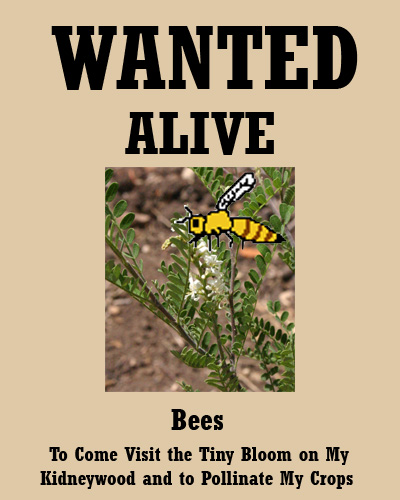
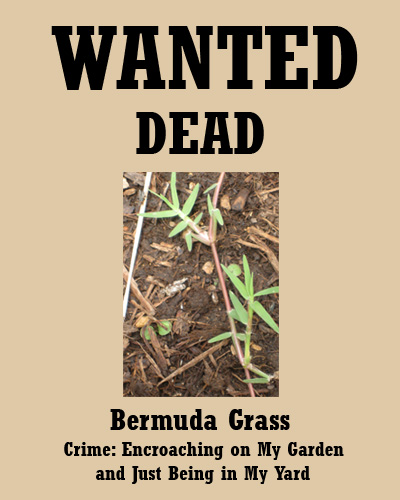
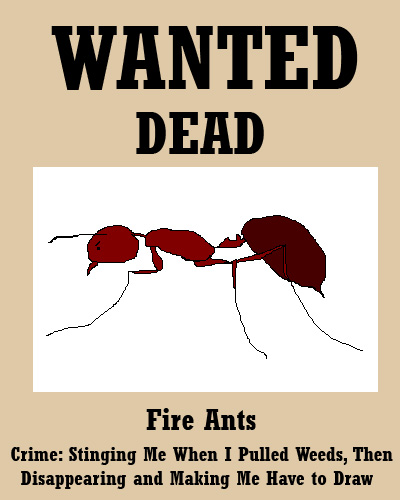
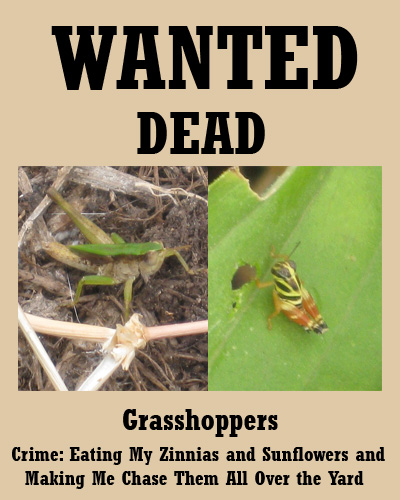
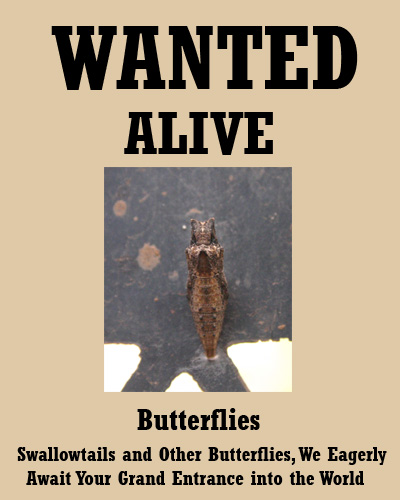
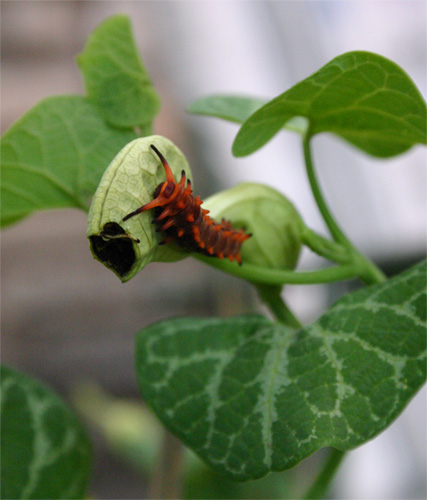
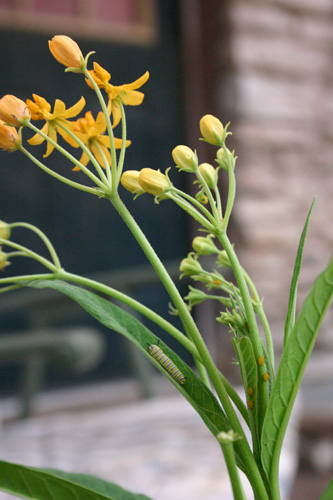


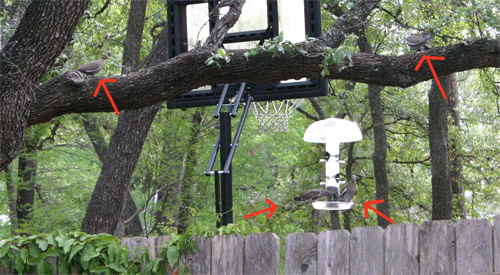
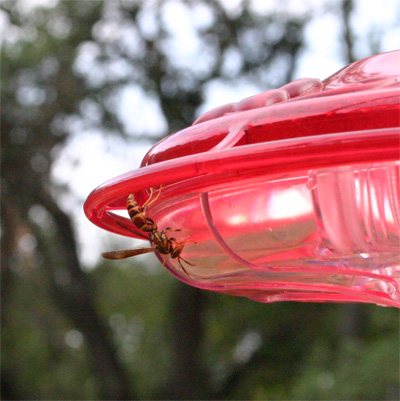
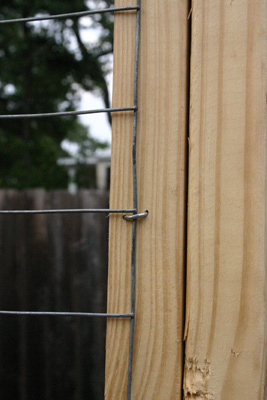
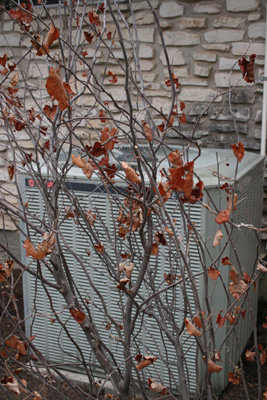
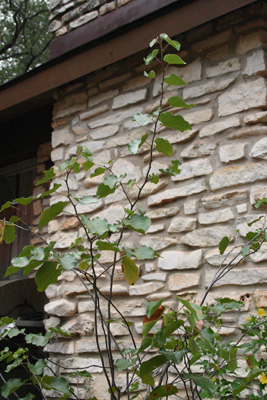
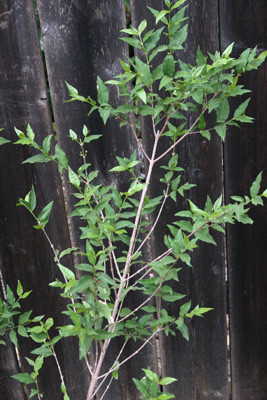
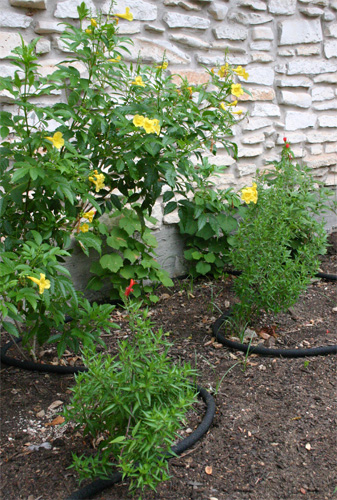
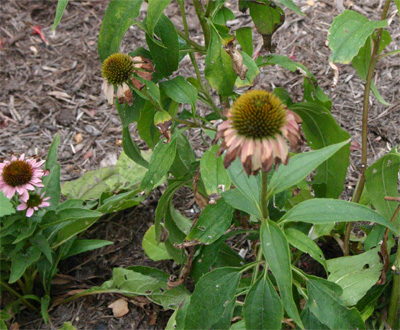
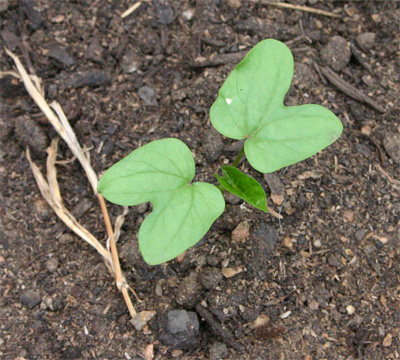
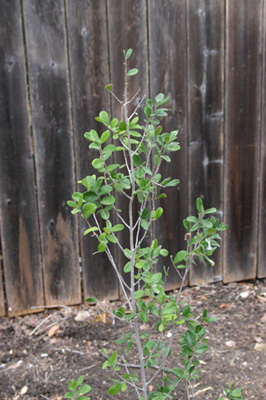 *(from the other son) Why is it that every time you want to plant something, your mom doesn’t have a plant to plant? But when you don’t want to plant something, she has lots and lots.
*(from the other son) Why is it that every time you want to plant something, your mom doesn’t have a plant to plant? But when you don’t want to plant something, she has lots and lots.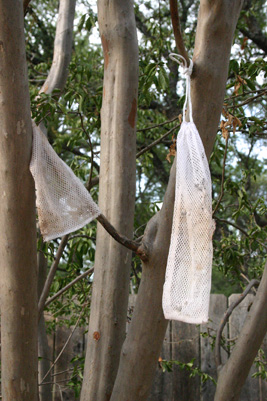
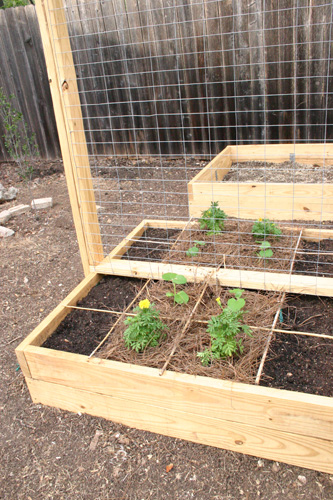
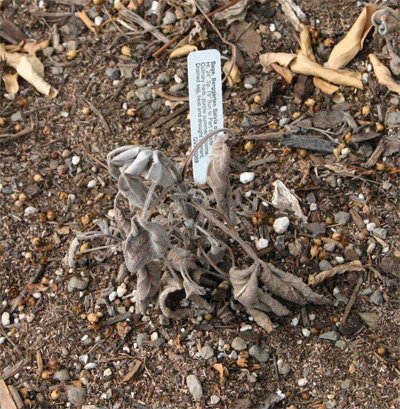 *Why is it that you can spend so much time making your outside yard beautiful and neglect your poor house plants?
*Why is it that you can spend so much time making your outside yard beautiful and neglect your poor house plants?